New Features
Support for Multiple Data Sources
Added the ”Data Source Manager” plugin, used to manage all collections and fields for data sources. The Data Source Manager plugin provides a centralized interface for managing data sources and does not provide the capability to access data sources. It needs to be used in conjunction with various data source plugins. Currently supported data sources include:
- Main Database: NocoBase main database, supporting relational databases such as MySQL, PostgreSQL, SQLite, etc.
- External MySQL Data Source: Access an existing MySQL database as a data source.
- External MariaDB Data Source: Access an existing MariaDB database as a data source.
- External PostgreSQL Data Source: Access an existing PostgreSQL database as a data source.
In addition, more data sources can be extended, which can be common types of databases or platforms that provide APIs (SDKs).

Adjustment to Collections Management
Moved the original “Collection Manager” to “Data Source > Main Database > Configuration”.
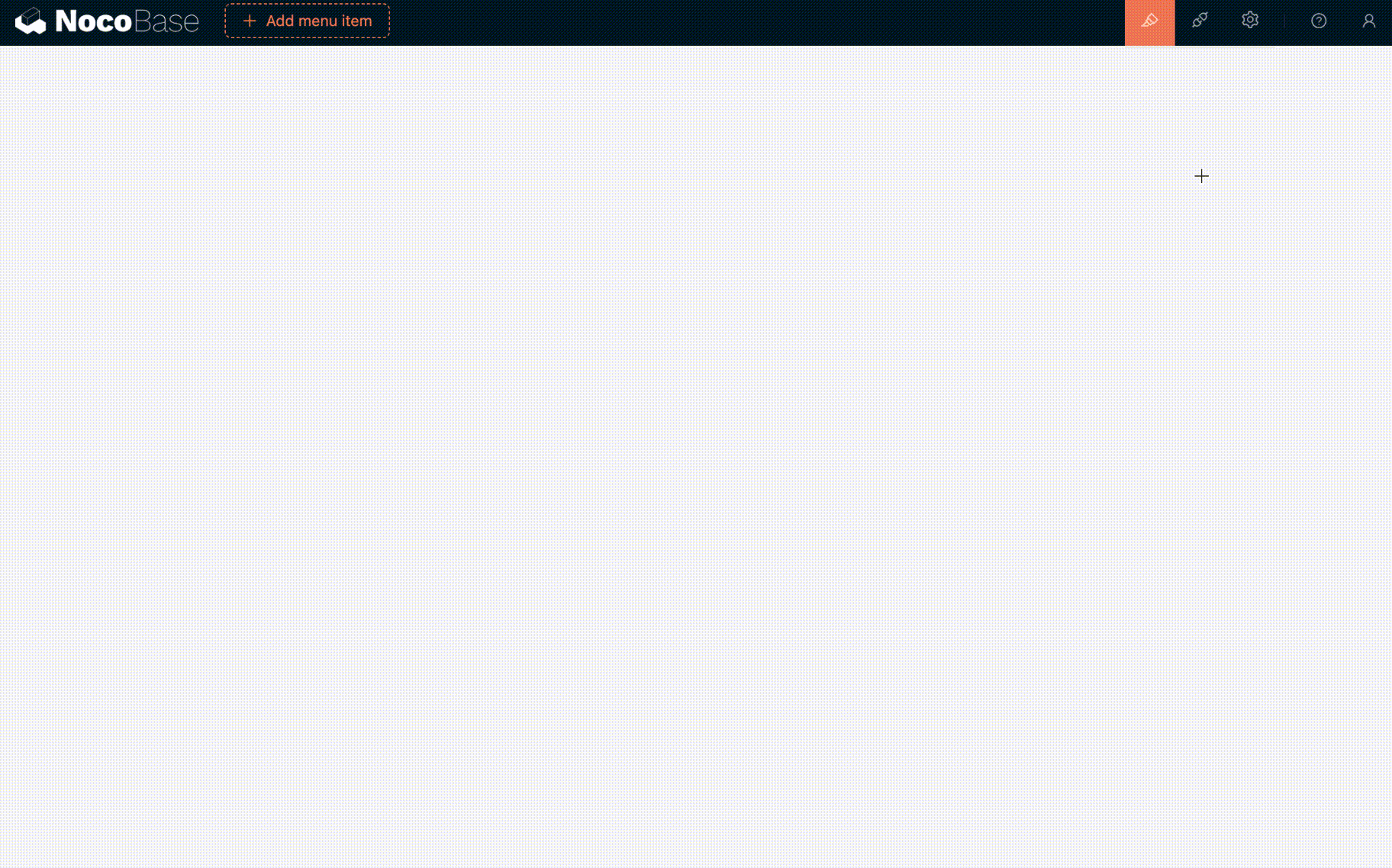
Support for Non-ID Fields as Primary and Relationship Constraints
When creating a collection, you can choose not to create an ID field.
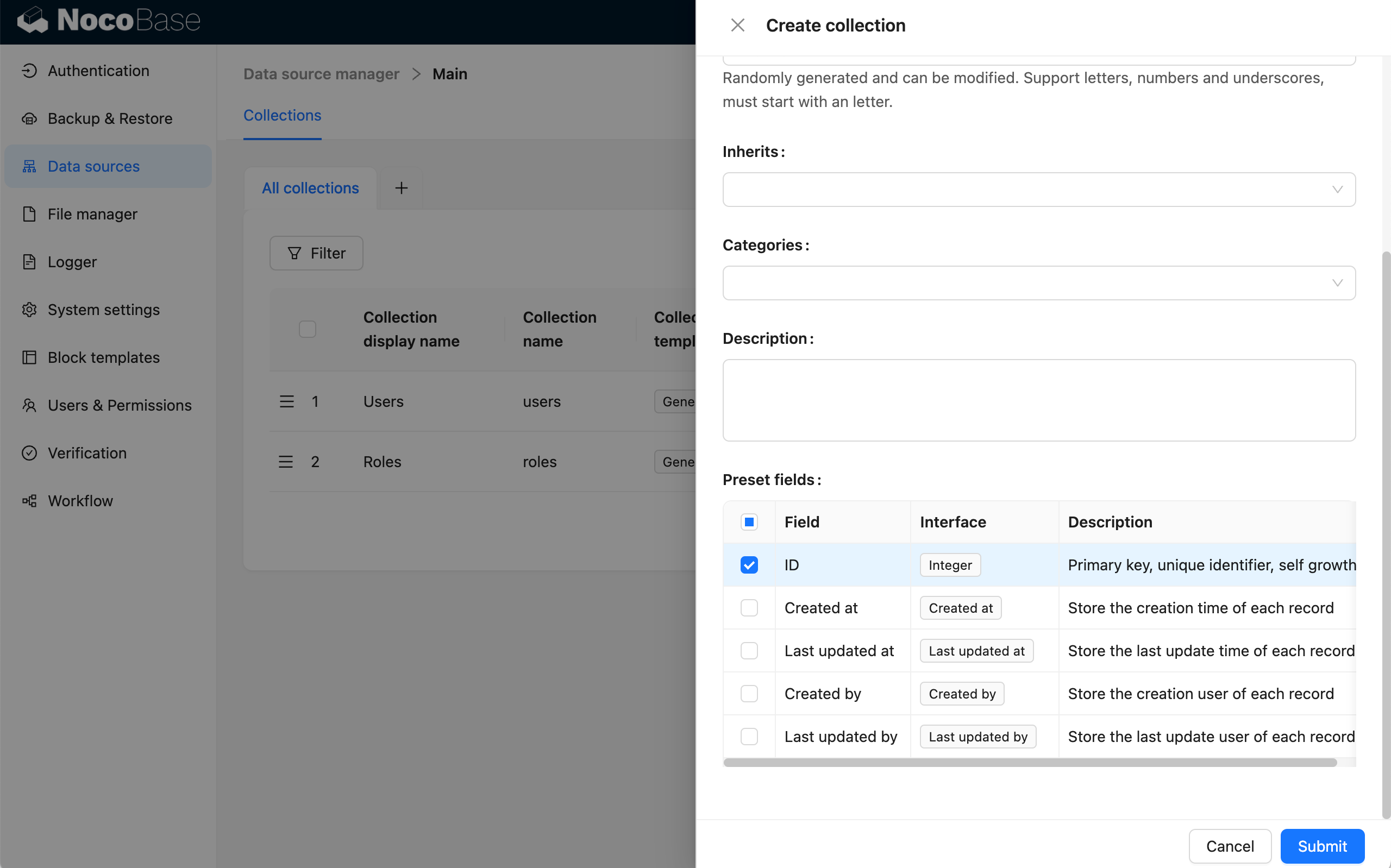
Integer fields can be used as primary keys.
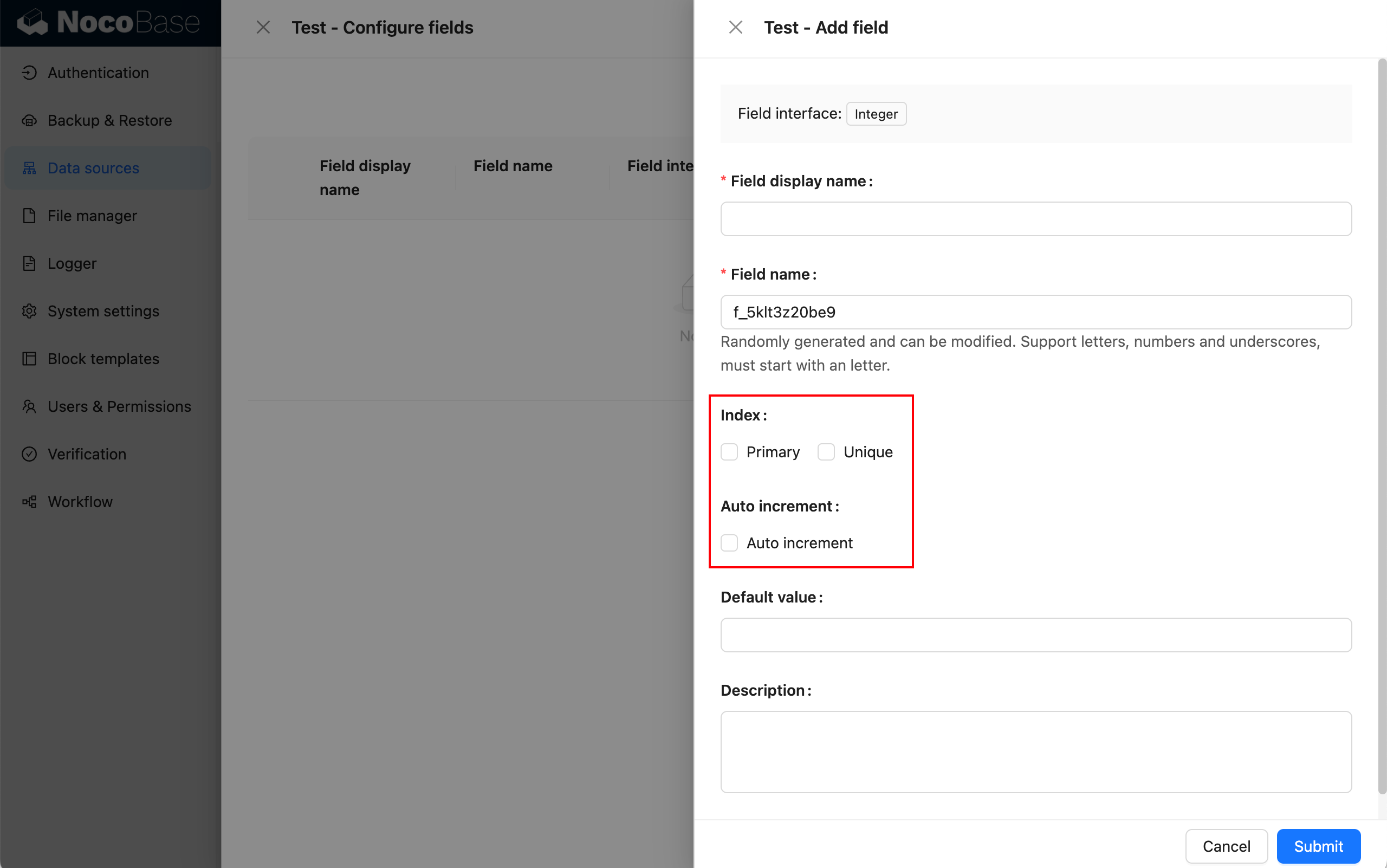
Single-line text fields can also be used as primary keys.
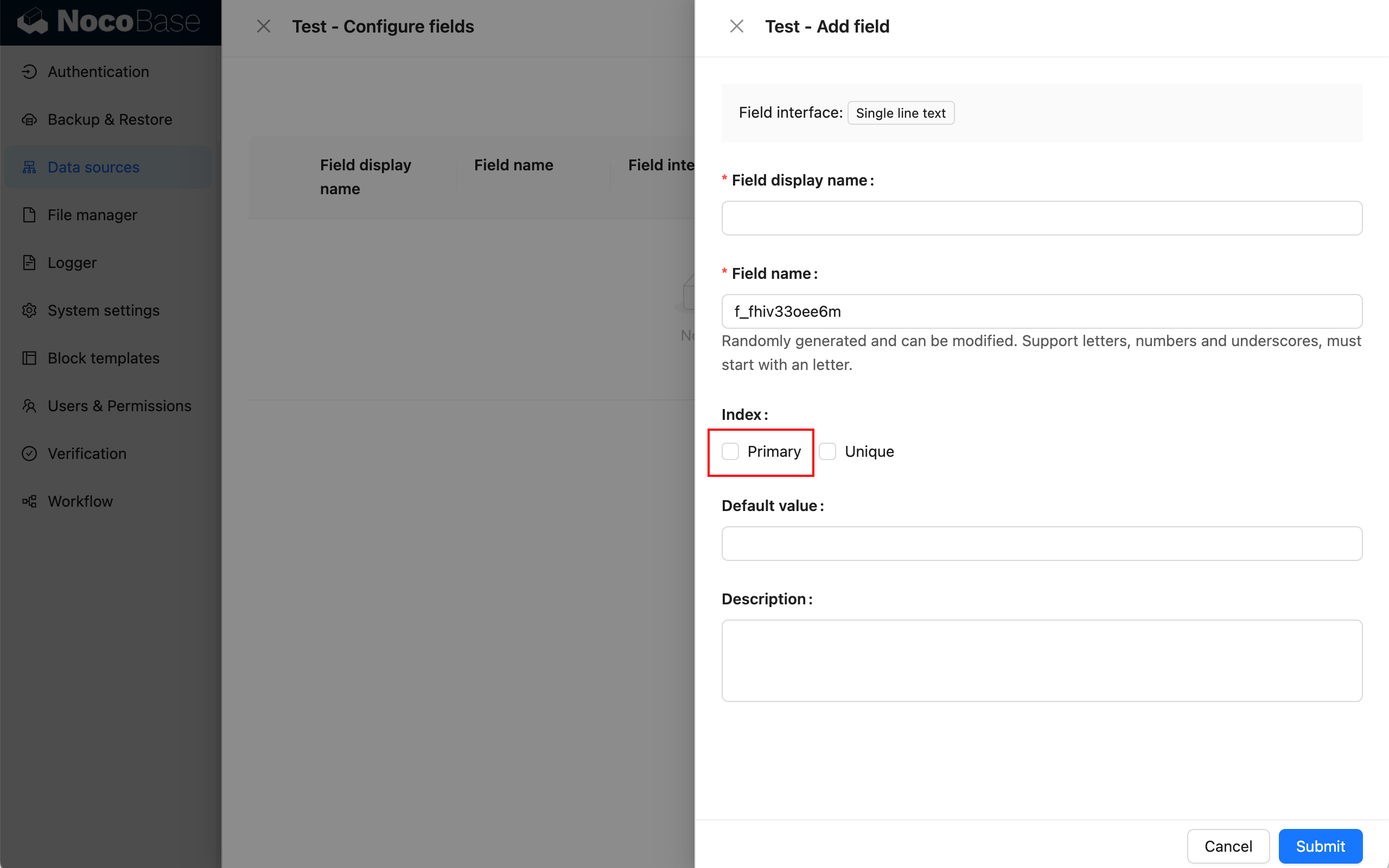
Relationship constraints support selecting other fields with Unique indexes set as non-primary key fields.
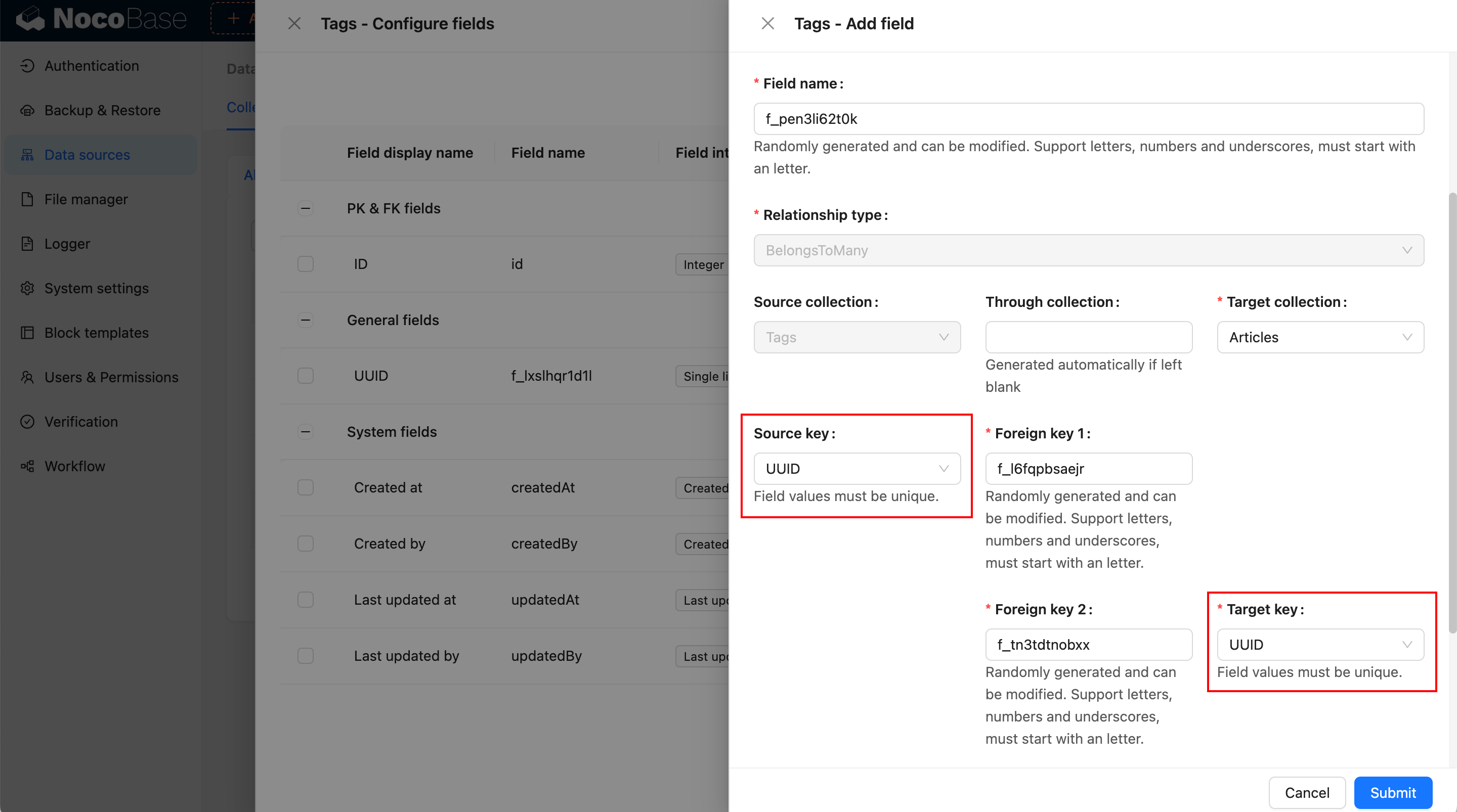
Adjustment to Drag-and-Drop Sorting
Added a “Sort” type field. Sorting fields are no longer automatically generated when creating collections and need to be manually created.
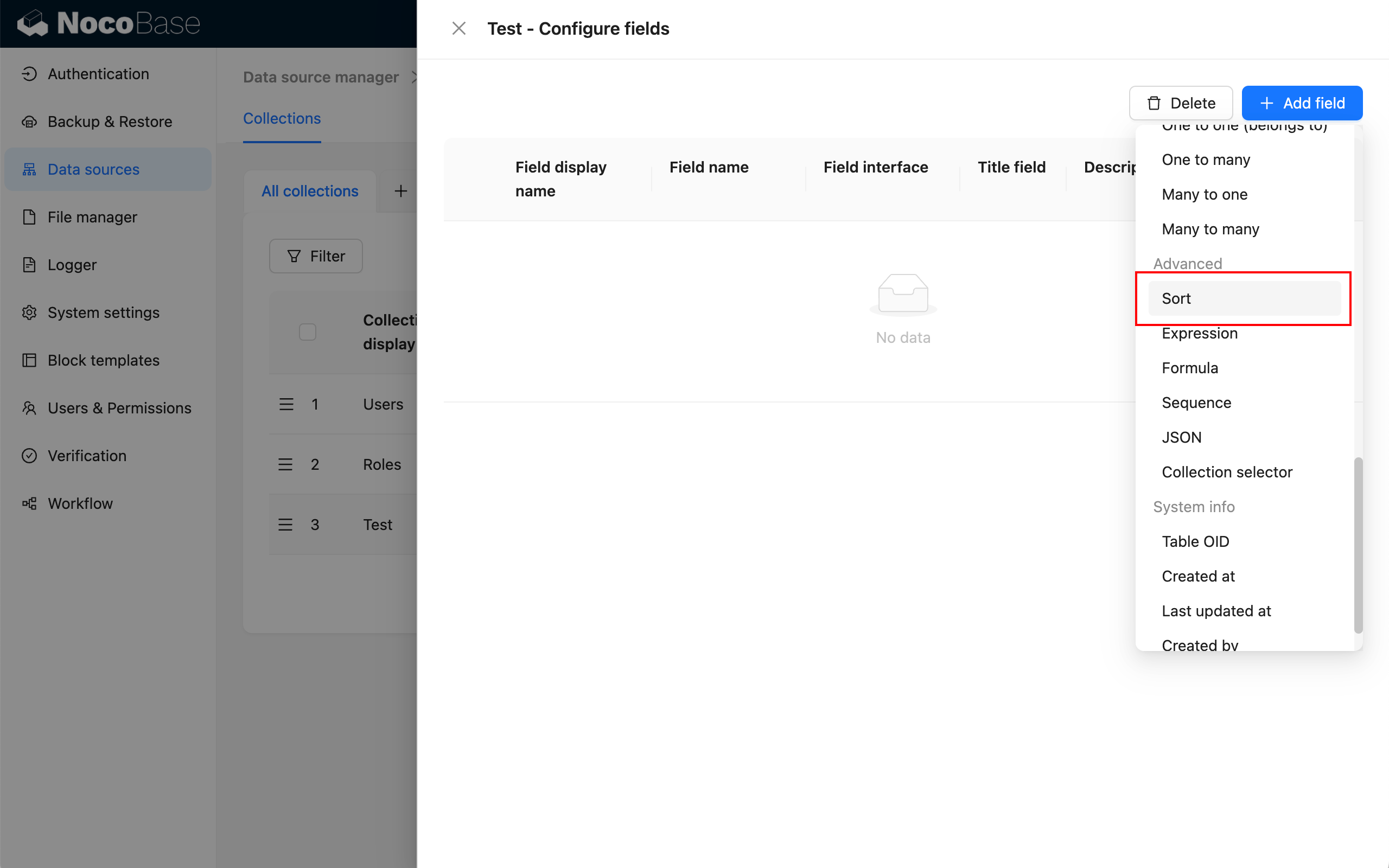
When selecting a field as a group, grouping will be done before sorting.
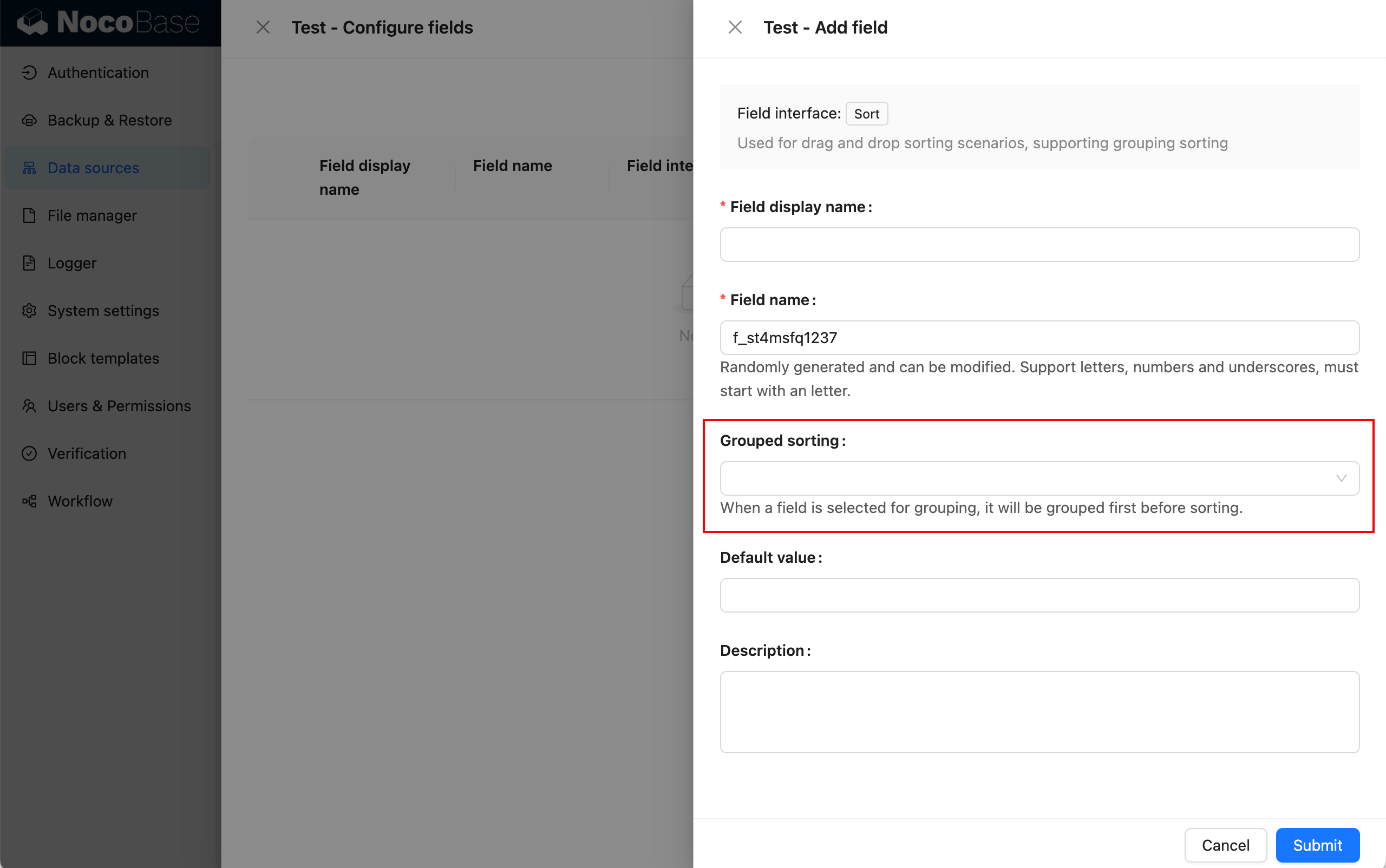
When enabling drag-and-drop sorting in table block, you need to select the sorting field.
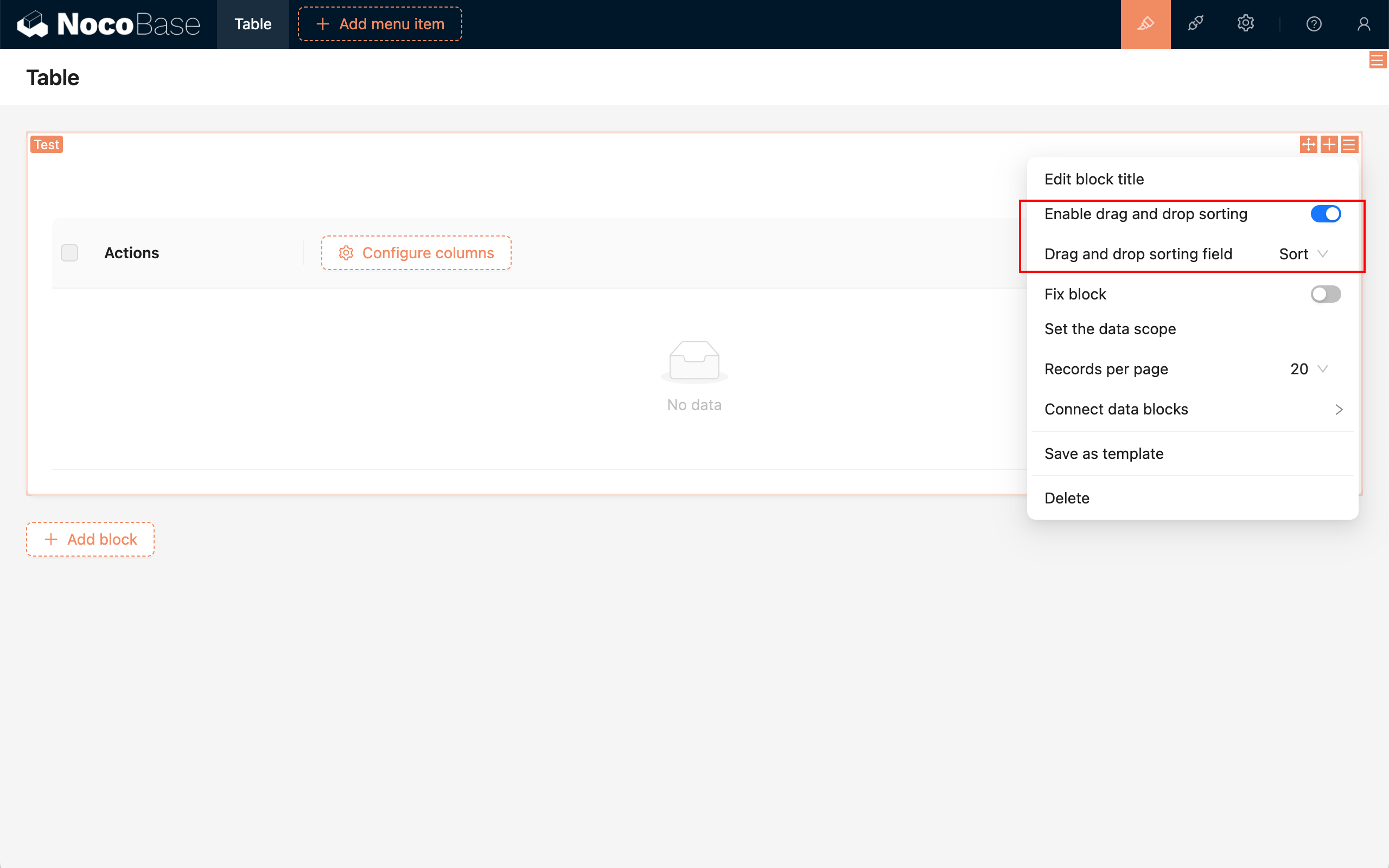
When creating a Kanban block, you need to select the sorting field.
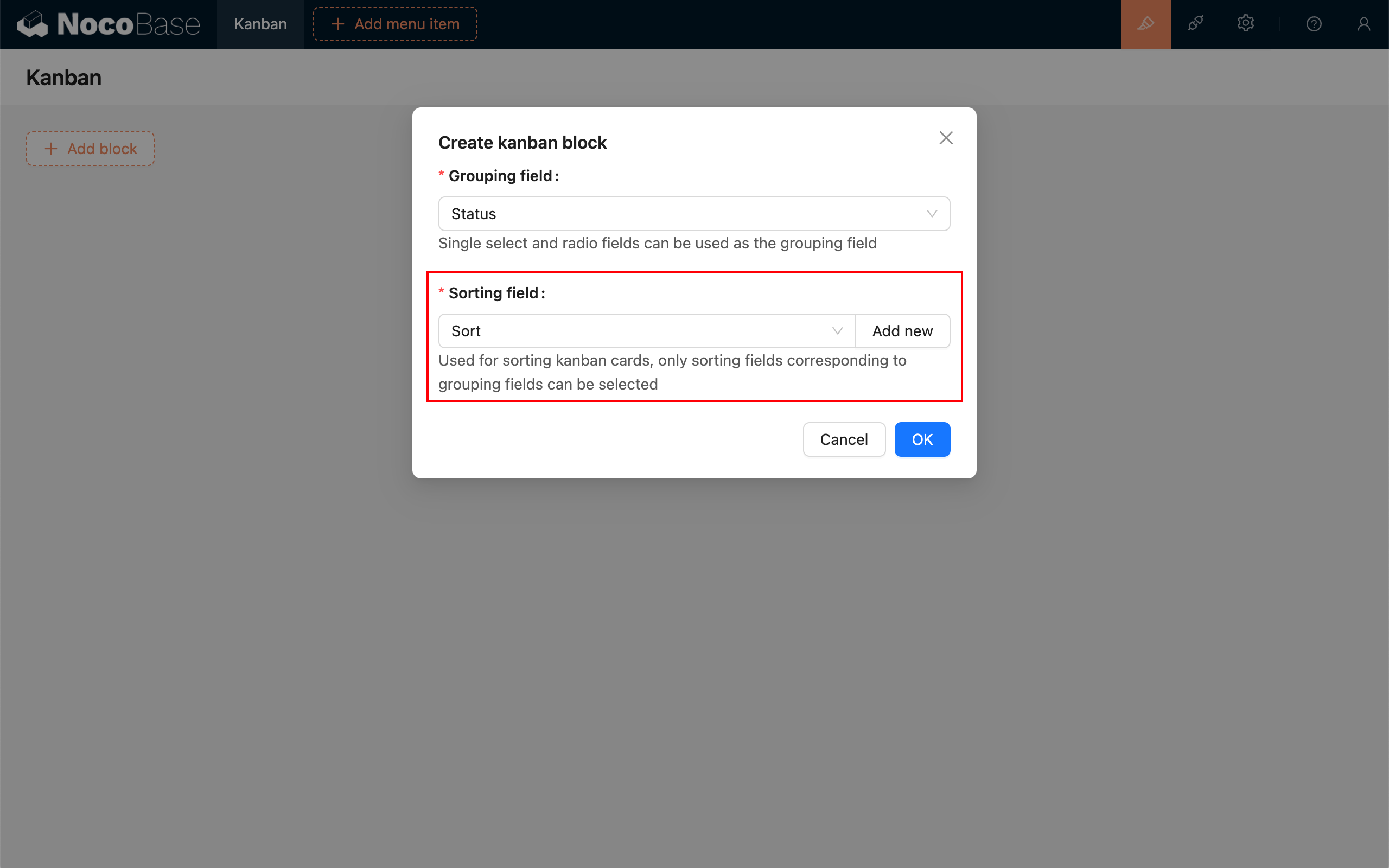
Adjustment to User and Permission Interfaces
Added user management interface and unified user and role management under one menu.
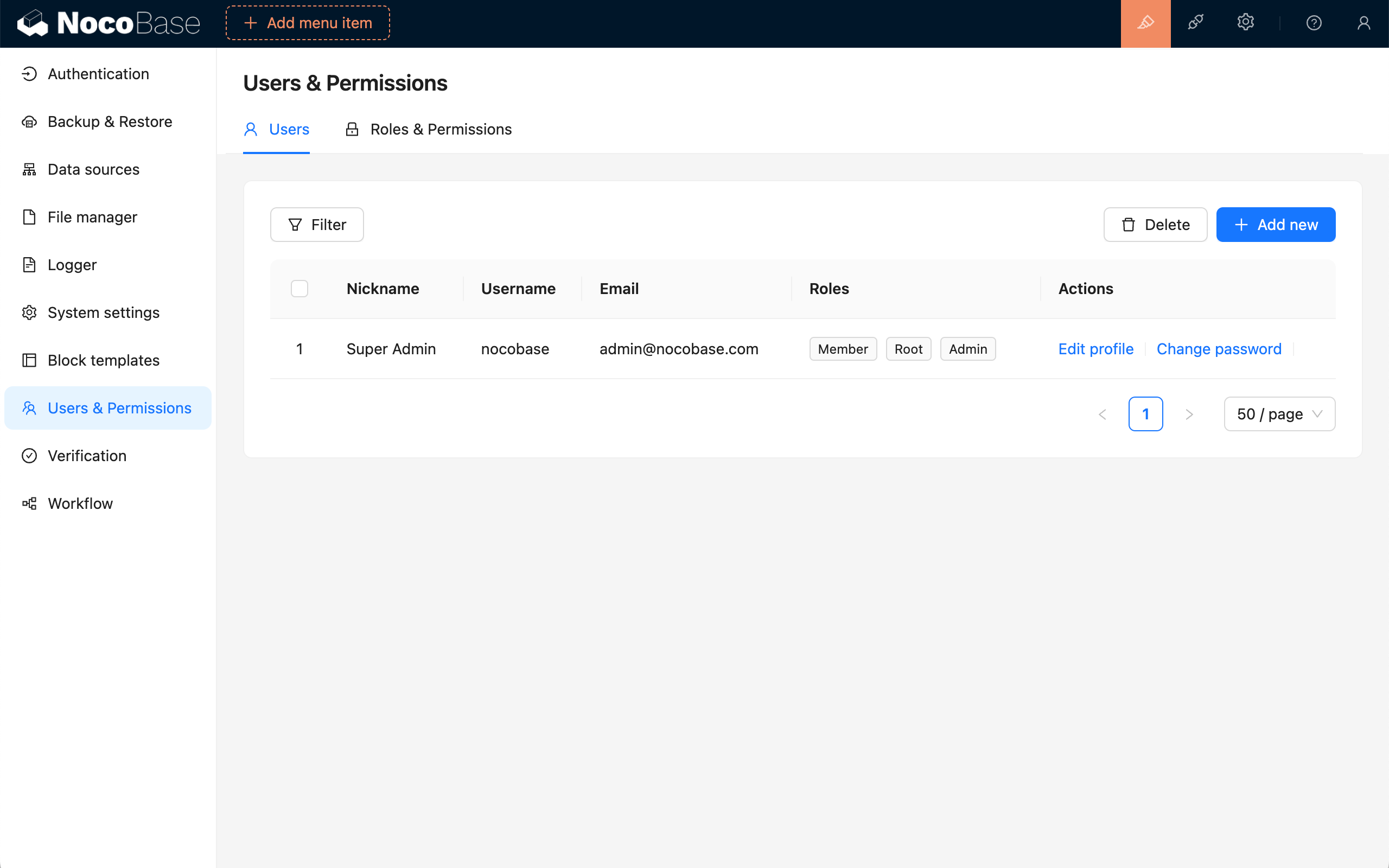
Adjusted the role management interface to facilitate the management of user-associated roles, permissions, departments, etc.
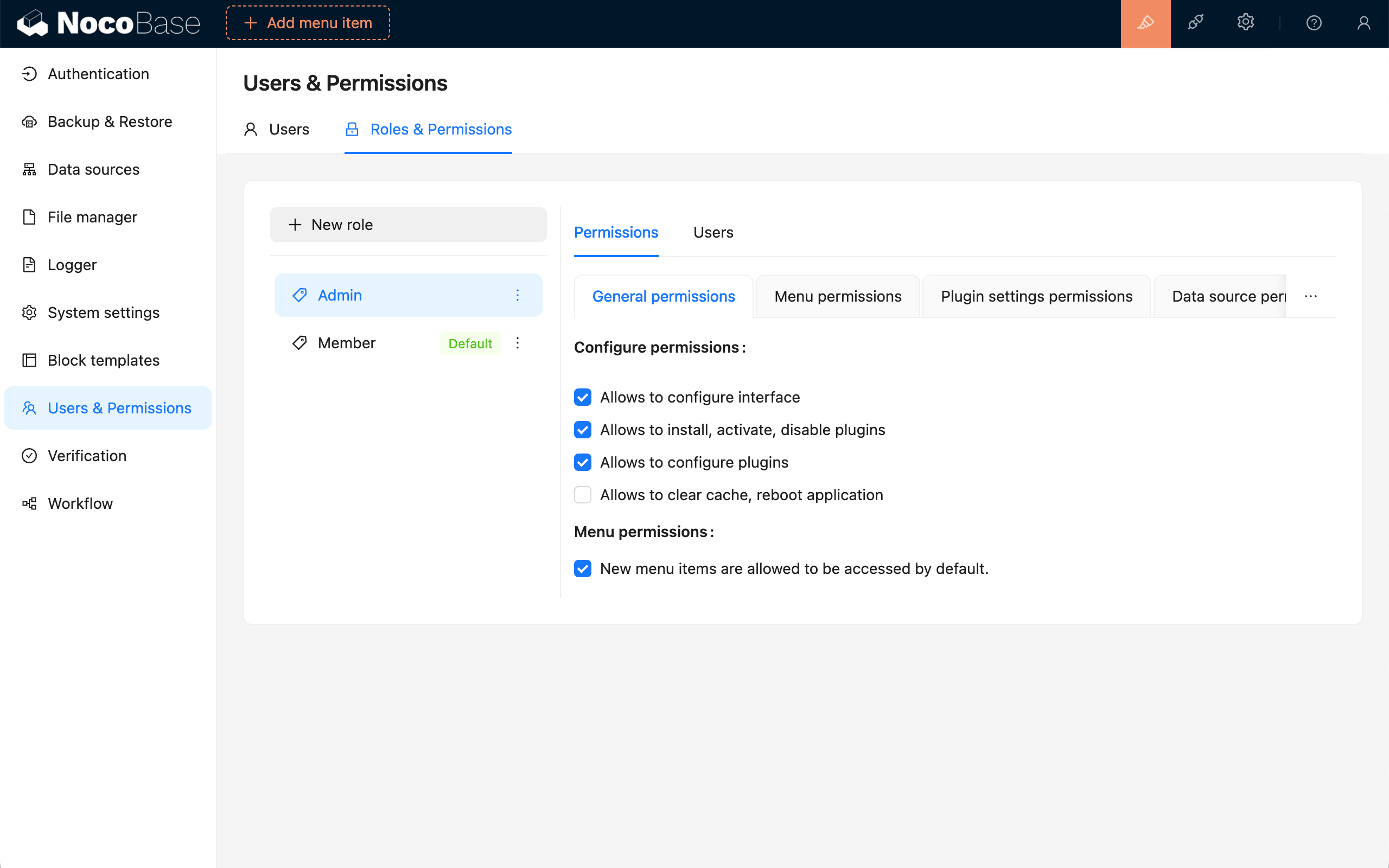
Moved the original “Action Permissions” to the “Data Source” tab.
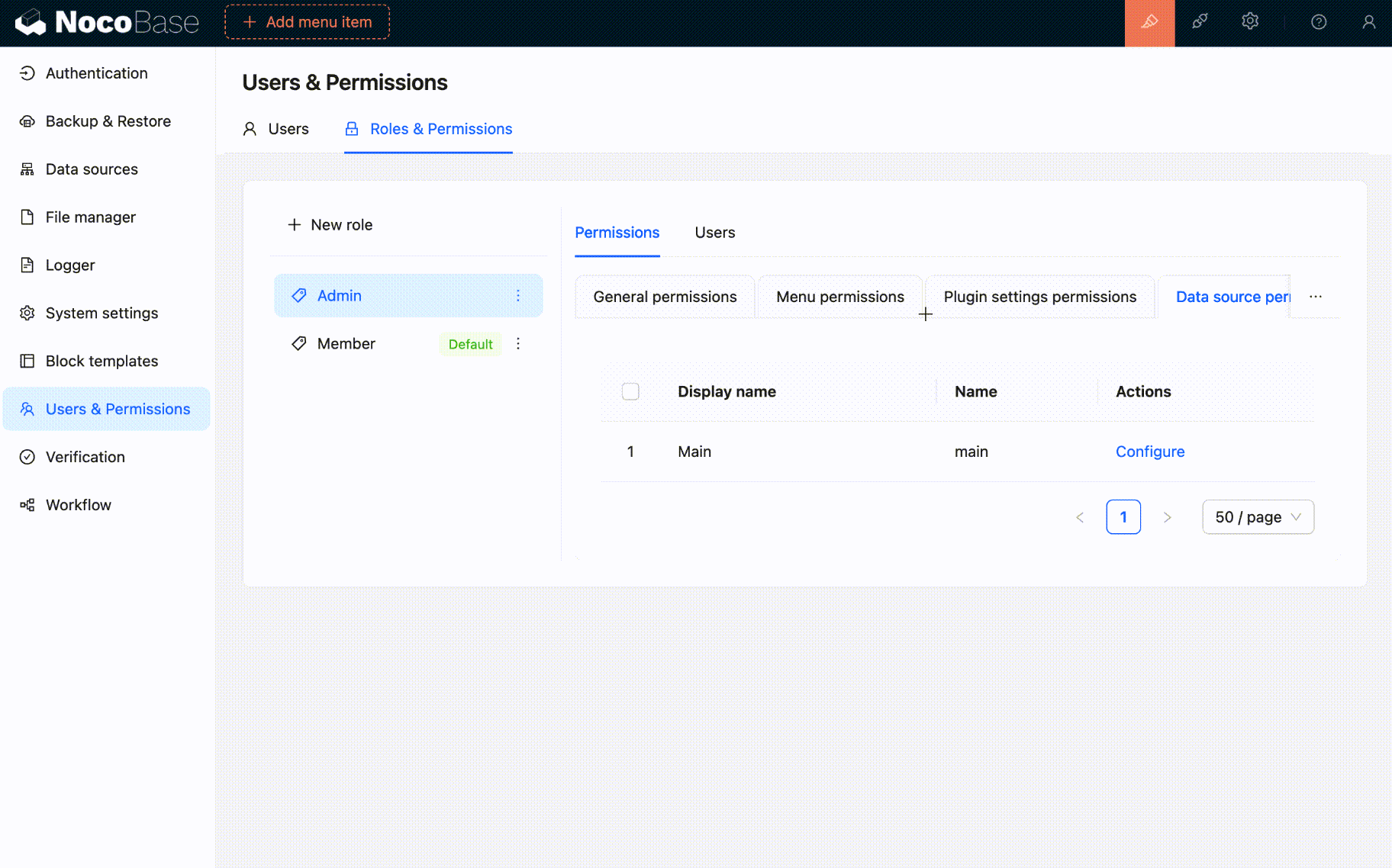
Department Plugin
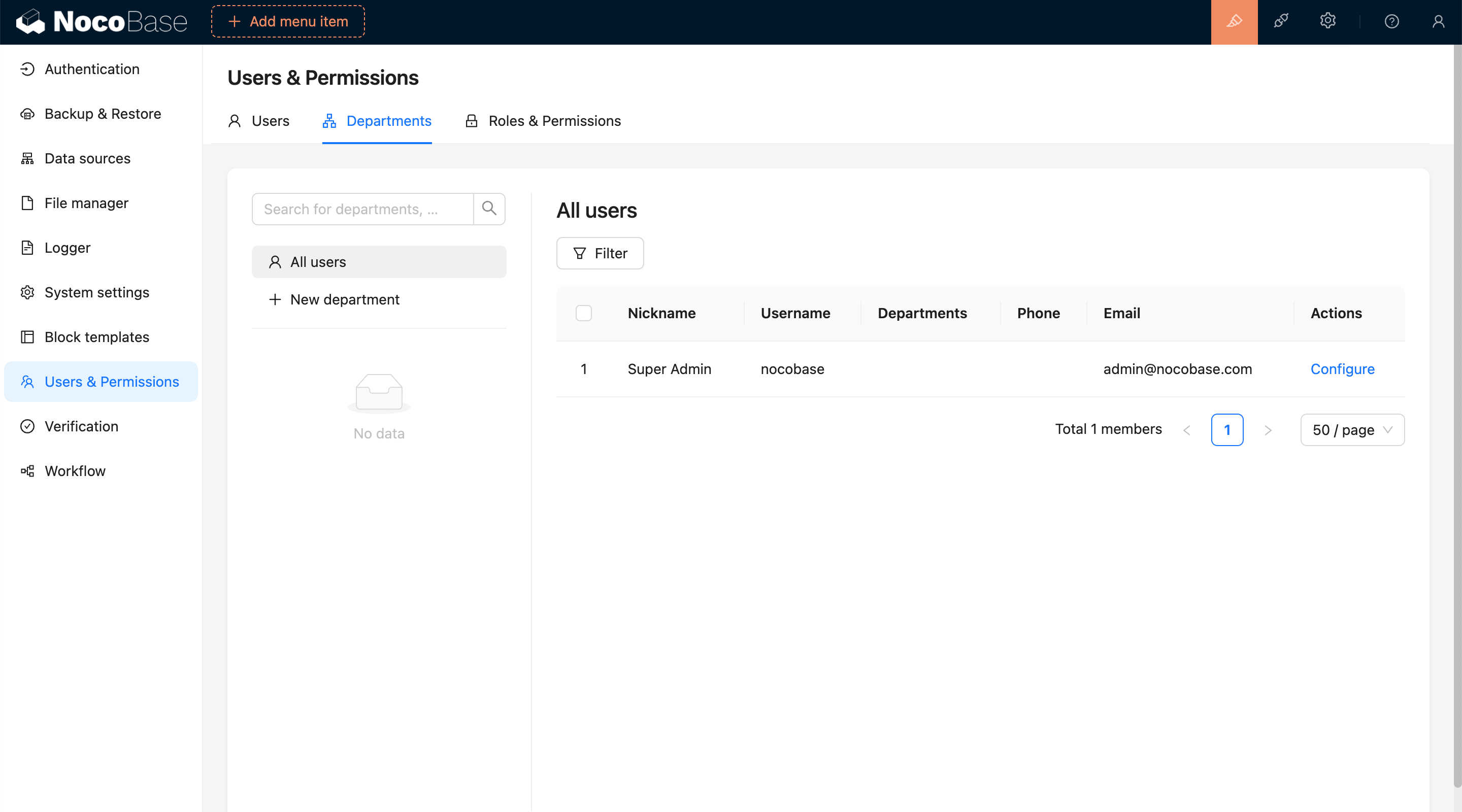
Organize users by departments, set hierarchical relationships, link roles to control permissions, and use departments as variables in workflows and expressions.
Workflow: Approval
The approval plugin provides dedicated workflow types (triggers) “Initiate Approval” and “Approval” nodes for this process. Combined with NocoBase’s unique custom data tables and custom blocks, various approval scenarios can be quickly and flexibly created and managed.
Approval configuration
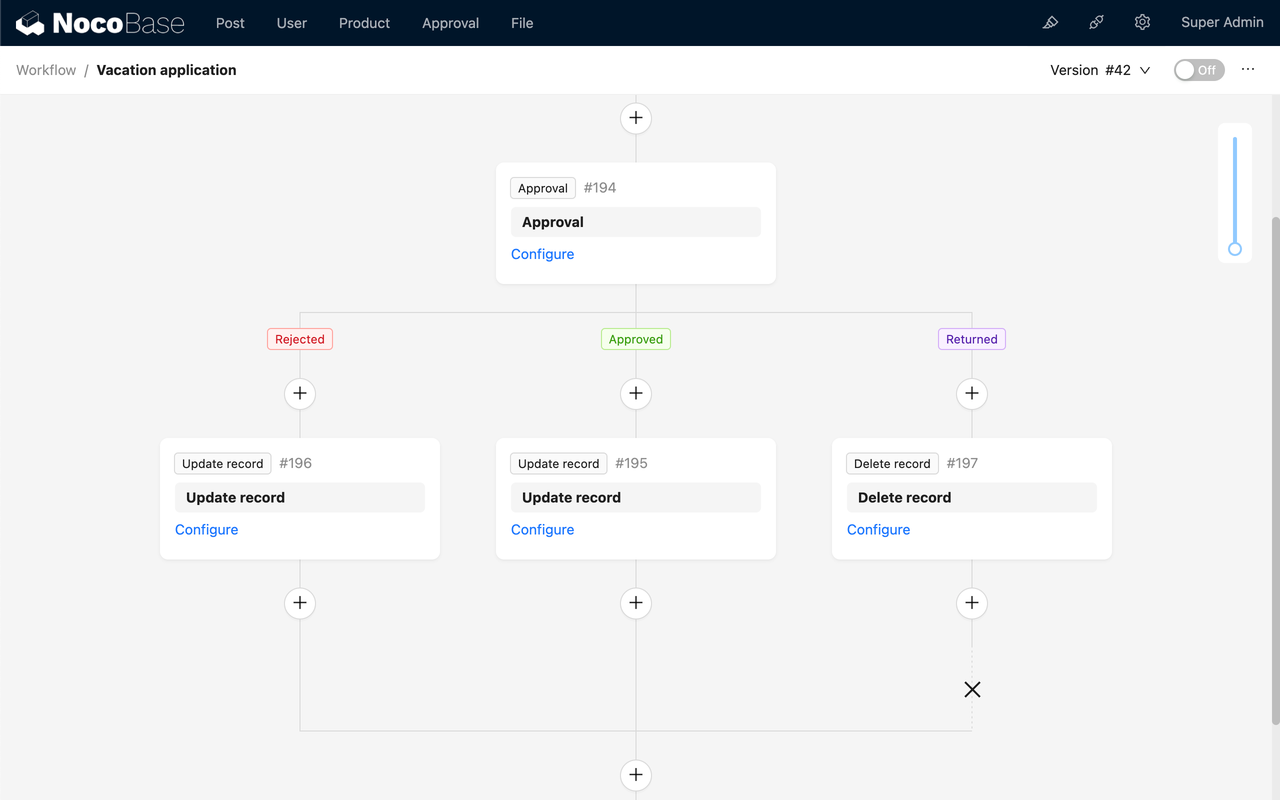
Approval process
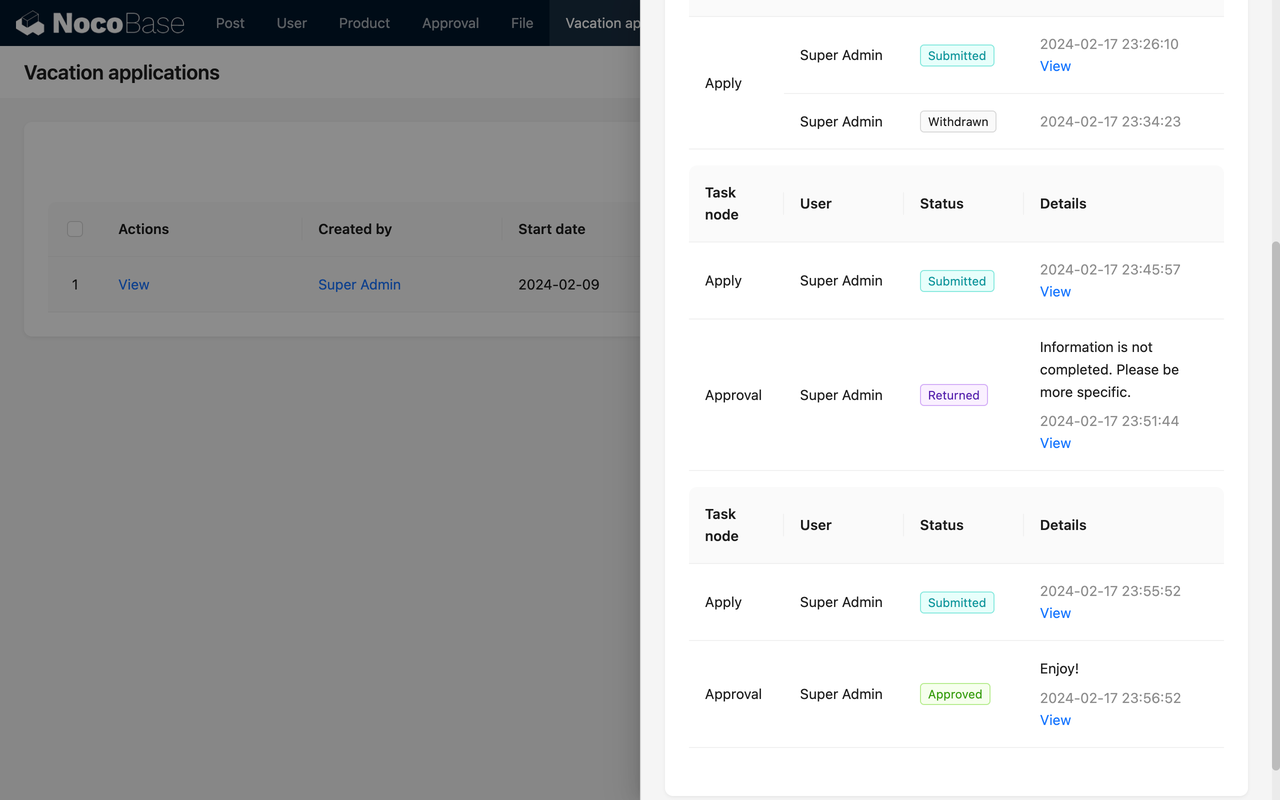
Further details can be found in the documentation: Workflow Approval
Workflow: End Process Node
This node immediately ends the current execution of the workflow when executed and ends with the status configured in the node. It is typically used for specific logic flow control, to exit the current workflow after meeting certain logical conditions, without continuing with subsequent processing. It can be likened to the return command in programming languages, used to exit the currently executing function.
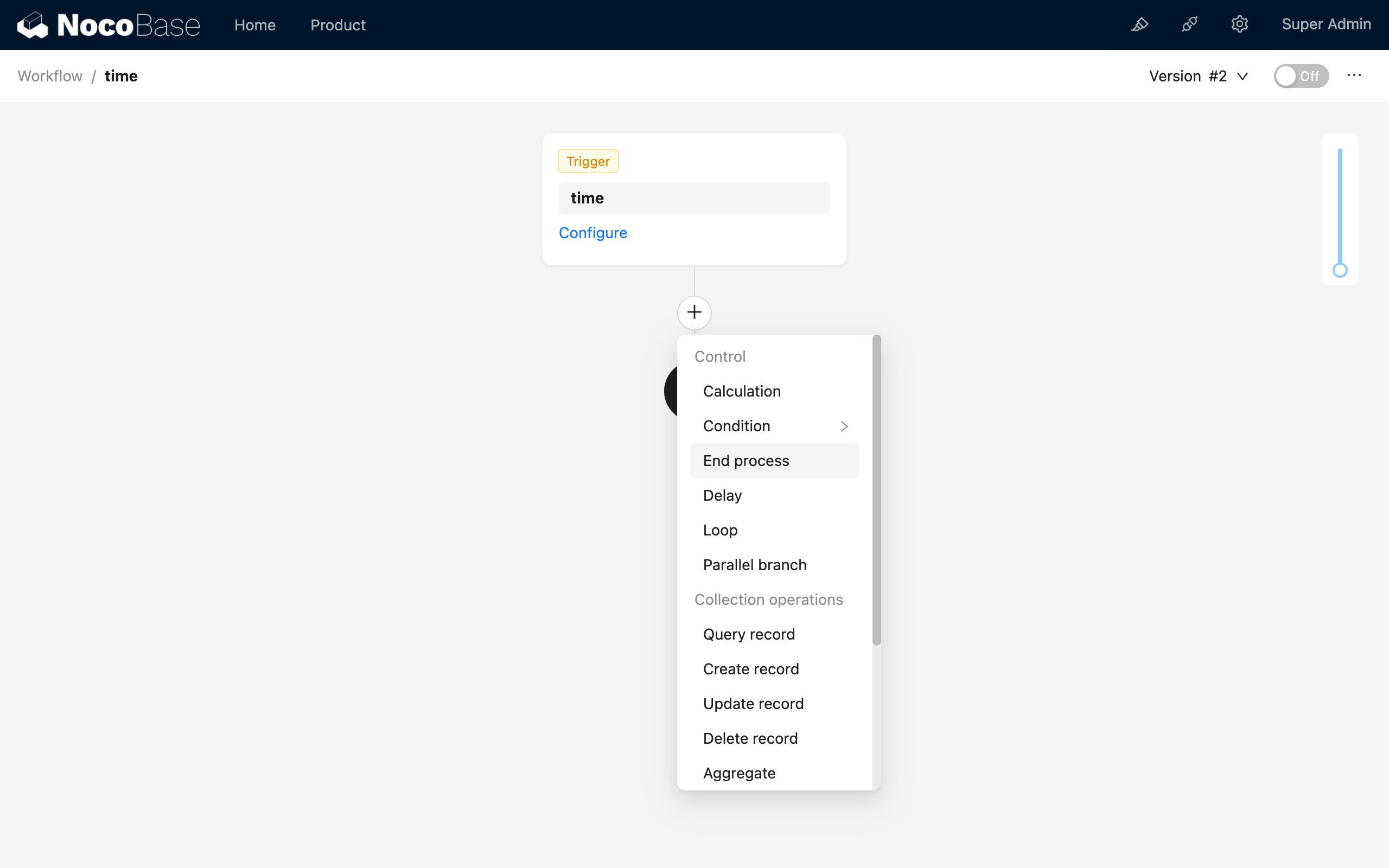
Further details can be found in the documentation: End Process Node
Workflow: Custom Variable Node
Variables can be declared in the workflow or assigned values to previously declared variables, typically used to store temporary data in the workflow. It is suitable for scenarios where calculation results need to be stored for later use outside the branch (such as loops, parallelism, etc.).

Further details can be found in the documentation: Custom Variable Node
Workflow: Request Interceptor
The request interceptor plugin provides a mechanism to intercept operations on forms, where the interception event is triggered after the corresponding form operation is submitted and before it is processed. If a “End Process” node is executed in the subsequent process flow after triggering, or if other nodes fail to execute (errors or other incomplete executions), the form operation will be intercepted, otherwise the scheduled operation will be executed normally. It can be used for business validation or logic checks to approve or intercept client-submitted create, update, and delete operations.
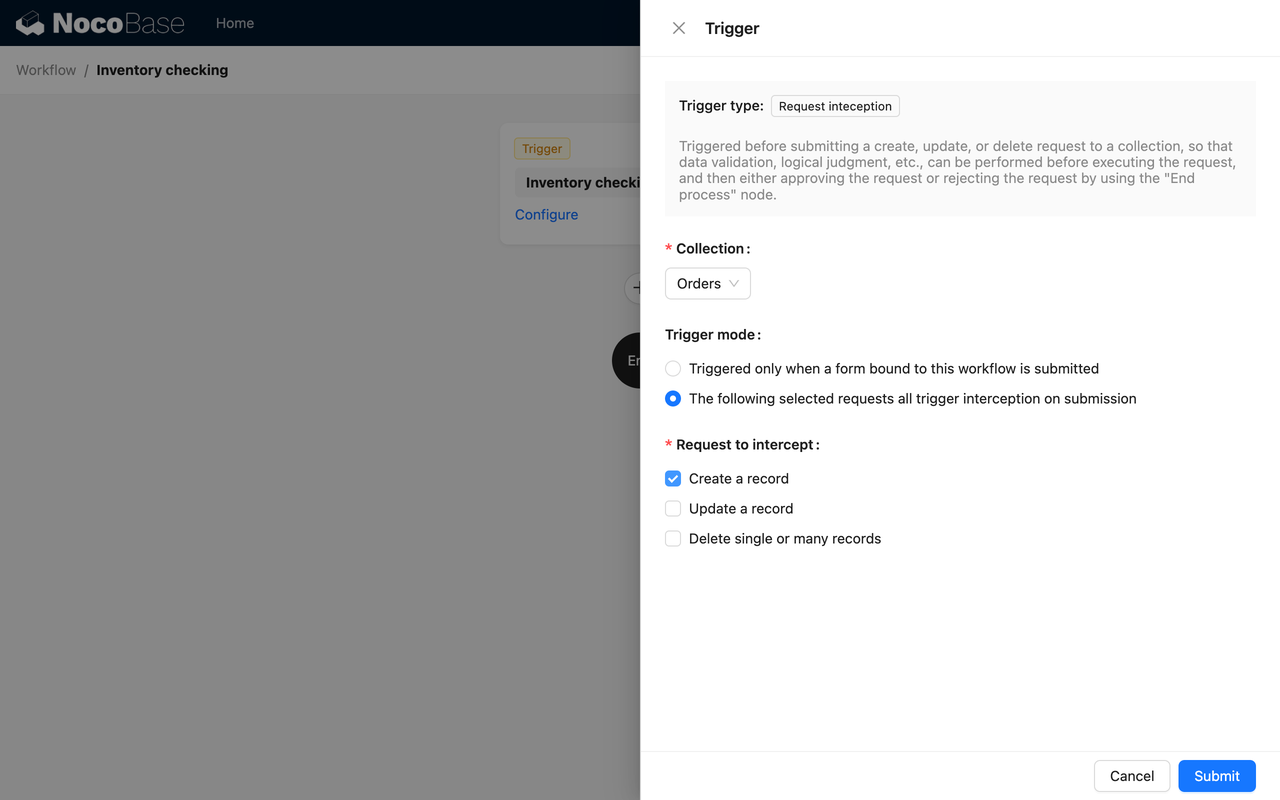
Further details can be found in the documentation: Request Interceptor
Workflow: Response Message Node
The response message node is used to provide feedback to the client with custom messages in specific types of workflows (such as request interception and form events).
Node configuration
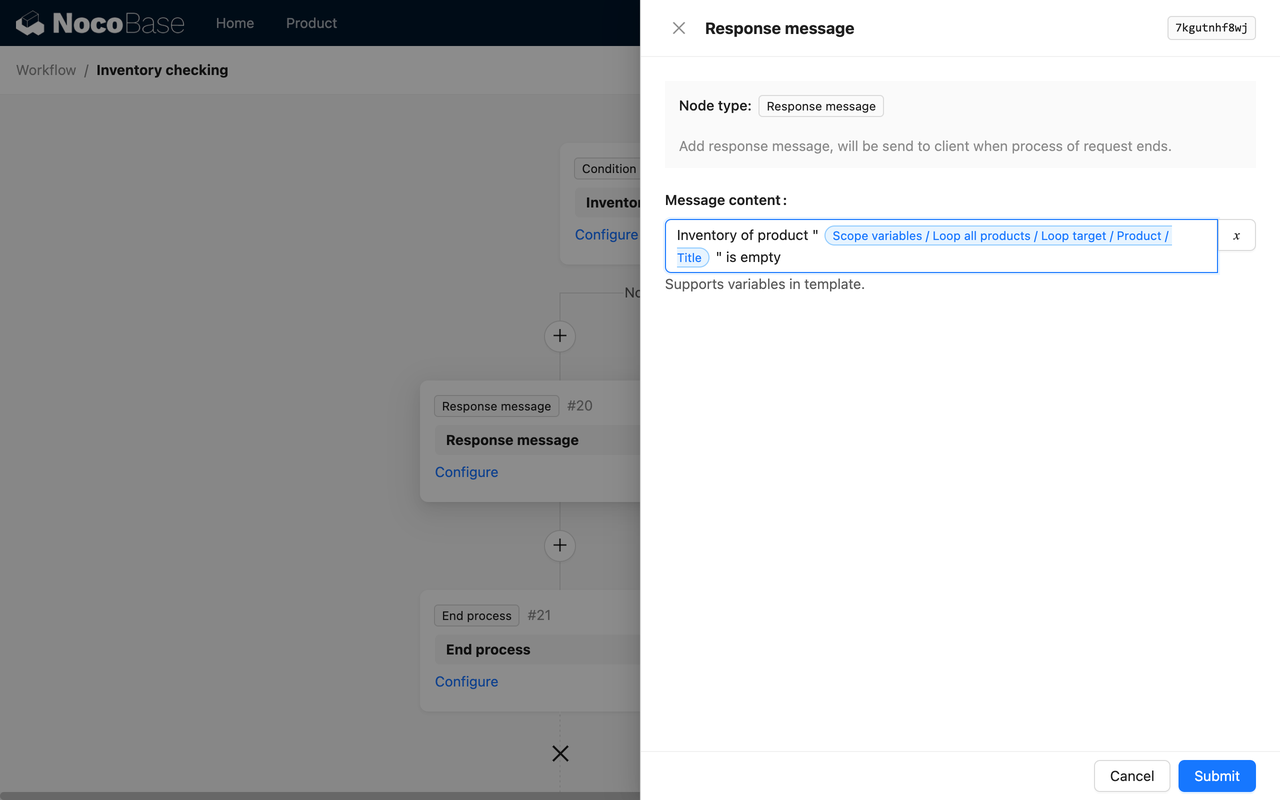
Prompt message
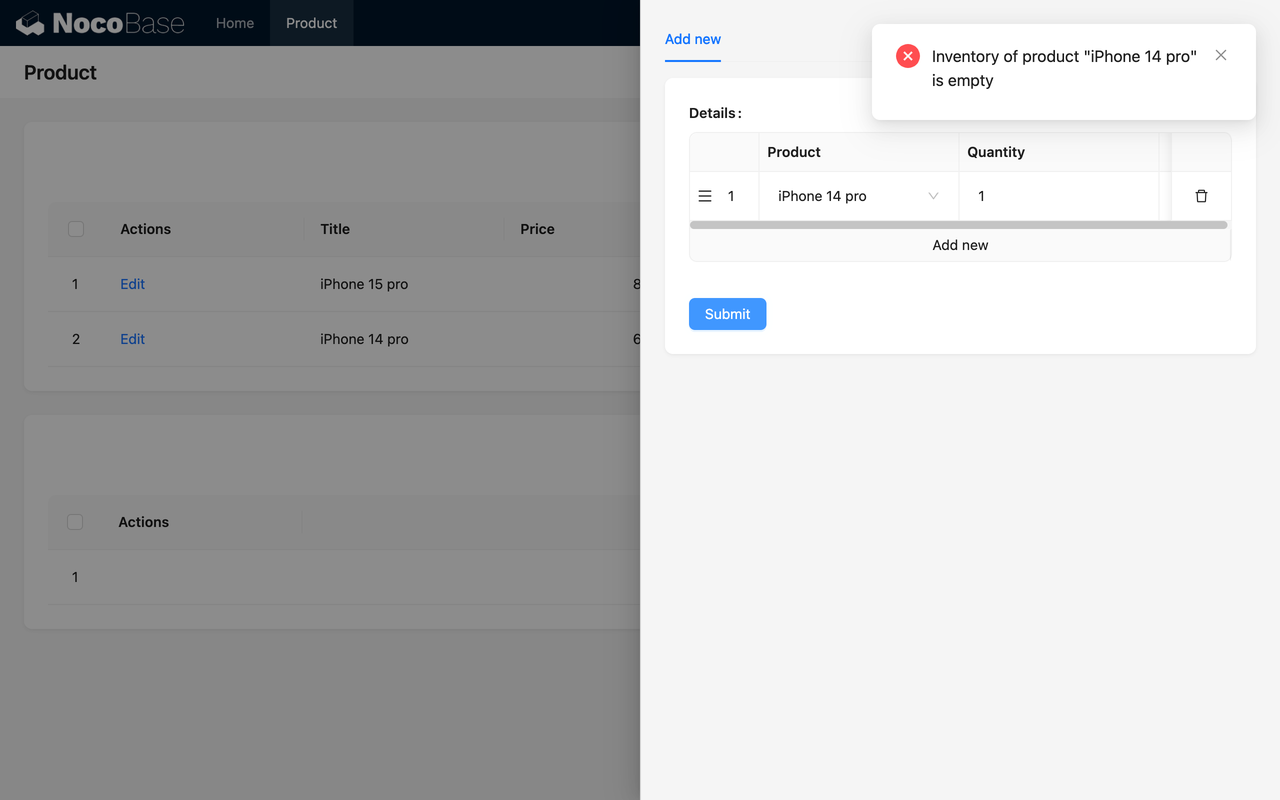
Further details can be found in the documentation: Response Message Node
Incompatible Changes
Conflictingly Named APIs
In this kernel change, some new version APIs conflict with the old version names. These conflicting old version APIs will be retained in this version but will be uniformly suffixed with _deprecated.
| Original API | Deprecated API | New API |
|---|---|---|
| CollectionProvider | CollectionProvider_deprecated | CollectionProvider |
| useCollection | useCollection_deprecated | useCollection |
| useCollectionField | useCollectionField_deprecated | useCollectionField |
| useCollectionManager | useCollectionManager_deprecated | useCollectionManager |
| useContext(CollectionManagerContext) | useCollectionManager_deprecated | useCollectionManager |
If you are using the above related APIs, you have two ways to change:
- Simple replacement: Replace the original API with the one suffixed with
_deprecated, for example, replaceuseCollection()withuseRecord_deprecated(). - Use the new API according to the new documentation: Although the names of the new APIs are the same as the old APIs, there are differences in parameters and return values. You need to refer to the new documentation
to adjust the corresponding code.
Other APIs Requiring Adjustment
registerTemplate()changed toapp.dataSourceManager.addCollectionTemplates()registerField()changed toapp.dataSourceManager.addFieldInterfaces()registerGroup()changed toapp.dataSourceManager.addFieldInterfaceGroups()useContext(CollectionManagerContext)changed touseCollectionManager_deprecated()- Extend collections using
ExtendCollectionsProvider RecordProviderrequires explicit passing of the parent parameter when needed
Change Examples
Collection Template Extension
Definition
Previously defined as an object, it now needs to be changed to a class. For example:
Before:
import { ICollectionTemplate } from '@nocobase/client';
const calendar: ICollectionTemplate = {
name: 'calendar',
title: 'Calendar collection',
order: 2,
color: 'orange',
// ...
}
Now:
import { CollectionTemplate } from '@nocobase/client';
class CalendarCollectionTemplate extends CollectionTemplate {
name = 'calendar';
title = 'Calendar collection';
order = 2;
color = 'orange';
}
The original object properties become class members.
Registration
Previously registered through registerTemplate, now needs to be registered through the plugin’s dataSourceManager.addCollectionTemplates. For example:
Before:
import { registerTemplate } from '@nocobase/client';
import { calendar } from './calendar'
registerTemplate('calendar', calendar);
Now:
import { Plugin } from '@nocobase/client';
import { CalendarCollectionTemplate } from './calendar'
export class CalendarPluginClient extends Plugin {
async load() {
this.app.dataSourceManager.addCollectionTemplates([CalendarCollectionTemplate]);
}
}
Field Interface Extension
Definition
Previously defined as an object, it now needs to be changed to a class. For example:
Before:
import { IField } from '@nocobase/client';
const attachment: IField = {
name: 'attachment',
type: 'object',
group: 'media',
title: 'Attachment',
// ...
}
Now:
import { CollectionFieldInterface } from '@nocobase/client';
class AttachmentFieldInterface extends CollectionFieldInterface {
name = 'attachment';
type = 'object';
group = 'media';
title = 'Attachment';
// ...
}
The original object properties become class members.
Registration
Previously registered through registerField, now needs to be registered through the plugin’s dataSourceManager.addFieldInterfaces and does not require passing CollectionManagerProvider again. For example:
Before:
import { registerField } from '@nocobase/client';
import { attachment } from './attachment'
- registerField(attachment.group, 'attachment', attachment);
export const FileManagerProvider: FC = (props) => {
return (
- <CollectionManagerProvider interfaces={{ attachment }}>
<SchemaComponentOptions scope={hooks} components={{ UploadActionInitializer }}>
{props.children}
</SchemaComponentOptions>
- </CollectionManagerProvider>
);
};
Now:
import { Plugin } from '@nocobase/client';
import { AttachmentFieldInterface } from './attachment'
export class FilPlugin extends Plugin {
async load() {
this.app.dataSourceManager.addFieldInterfaces([AttachmentFieldInterface]);
}
}
Field Interface Group Extension
Previously registered through registerGroup, now needs to be registered through the plugin’s dataSourceManager.addFieldInterfaceGroups. For example:
- import { registerGroup, Plugin } from '@nocobase/client';
+ import { Plugin } from '@nocobase/client';
- registerGroup('map', {
- label: 'Map-based geometry',
- order: 10
- })
export class MapPlugin extends Plugin {
async load() {
+ this.app.dataSourceManager.addFieldInterfaceGroups({
+ map: {
+ label: generateNTemplate('Map-based geometry'),
+ order: 51,
+ },
+ });
}
}
useContext(CollectionManagerContext) Changed to useCollectionManager_deprecated()
- const ctx = useContext(CollectionManagerContext);
+ const ctx = useCollectionManager_deprecated();
Extend Collections, Use ExtendCollectionsProvider Instead of CollectionManagerProvider
const Demo = () => {
- <CollectionManagerProvider collections={[apiKeysCollection]}>
+ <ExtendCollectionsProvider collections={[apiKeysCollection]}>
...
- </CollectionManagerProvider>
+ </ExtendCollectionsProvider>
}
Changes to RecordProvider
Previously, when the parent property was not passed, the value of the last RecordProvider was automatically retrieved as the parent. Now, the parent needs to be explicitly passed, and when the parent is not passed, the value of the parent will be undefined.
- <RecordProvider record={recordData}>
+ <RecordProvider record={recordData} parent={parentRecordData}>
...
</RecordProvider>
If there is no historical baggage, you can also directly use CollectionRecordProvider to replace.
- <RecordProvider record={recordData}>
+ <CollectionRecordProvider record={recordData} parent={parentRecordData}>
...
- </RecordProvider>
+ </CollectionRecordProvider>
⚠️Difference Between RecordProvider and CollectionRecordProvider
- RecordProvider is deprecated and will be removed in the future.
- RecordProvider carries the old RecordContext, while CollectionRecordProvider does not.